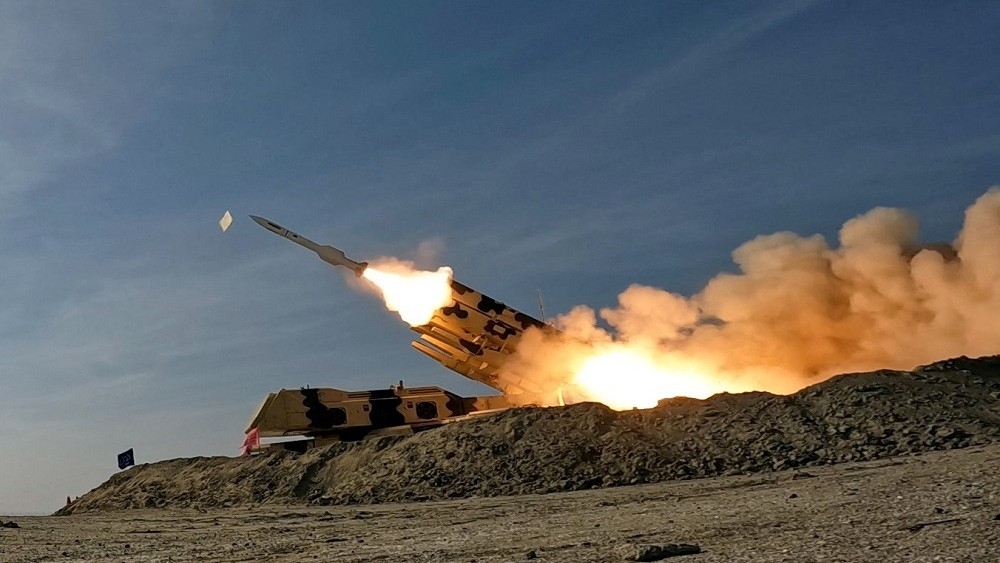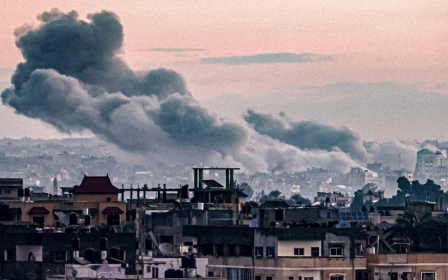Red Sea attacks: Can the US and Iran avoid a broader conflict?

More than 100 days have passed since the beginning of the Israeli war on Gaza. The enormity of this devastating crisis is hard to fathom. Tens of thousands of Palestinians have been killed and countless more wounded, including children who have had limbs amputated without anaesthetic.
The Israeli army’s unprecedented assault on Gaza, which has led to calamitous casualties and destruction, followed the 7 October attacks by Hamas that killed around 1,140 people in Israel.
The scale of Israel’s response dwarfs other historical conflicts. The notorious 1948 Deir Yassin massacre by Israeli militias, for example, killed around 120 Palestinians. Israel’s current war on Gaza has already killed more than 24,000, including 10,000 children. Thousands more are reported to be missing, presumed dead under the rubble of collapsed buildings.
Put another way, more than one percent of Gaza’s prewar population of 2.3 million people have been killed in just over three months.
The magnitude of Israel’s response has placed Iran in a challenging position. The Iranian government, which has assumed leadership in the anti-Israel struggle within the Islamic world, couldn’t rely merely on rhetoric. A response from the “axis of resistance” to Israel’s actions in Gaza was deemed necessary; otherwise, its credibility would be damaged.
New MEE newsletter: Jerusalem Dispatch
Sign up to get the latest insights and analysis on Israel-Palestine, alongside Turkey Unpacked and other MEE newsletters
On the other hand, direct intervention could prompt the United States to enter the war in support of Israel, leading to potentially unpredictable consequences for Iran and its ruling system. Despite its vehemently anti-American stance, Iran’s leadership tends to avoid direct confrontation with the US.
A notable example was Iran’s response to the killing of Quds Force commander Qassem Soleimani on the orders of former US President Donald Trump. Despite threats of “hard revenge”, Iran’s retaliation comprised a missile attack on a base housing US troops in Iraq, with the Americans reportedly receiving advance notice.
Multiple fronts
The solution Iran thus devised in relation to the Gaza war was to engage in a low-intensity, controlled conflict on multiple fronts, from Hezbollah in Lebanon against Israel, to proxies in Syria and Iraq against stationed Americans, while likely coordinating attacks with the Houthis in the Red Sea.
But there was a significant caveat: Hezbollah in Lebanon is a crucial asset for the Iranian government. If Hezbollah pushed too aggressively, risking an all-out war with Israel, the Iranian government would lose its most vital deterrent force. Hit-and-run tactics thus had to be approached with careful measurement and calculation.
Follow Middle East Eye's live coverage of the Israel-Palestine war
As of 2019, US military intelligence estimated that Hezbollah had around 150,000 rockets and missiles. The number might have increased since then, and the arsenal includes precision missiles, which is significant. In the 2006 war with Israel, Hezbollah used numerous unguided rockets with limited range in an attempt to damage a single Israeli target; a similar situation unfolded with Hamas in Gaza.
Ensuring the security of shipping in the Red Sea is of great significance for the global economy in general, and for the US in particular
After the 2019 Houthi attacks on Saudi oil refineries, Uzi Even, one of the founding scientists of the Dimona reactor, wrote in Haaretz: “Drone wreckage discovered in Saudi Arabia shows that the Iranians are manufacturing and operating drones so advanced (with jet engines and significant stealth capabilities) that they do not lag behind Israeli capabilities in this field. Seventeen targets incurred a direct hit in this concentrated bombardment. Considering the 20 projectiles whose debris was found at the attack site, that’s an 85 percent success rate, which indicates the very high capability and reliability of the technology that was used.”
Hezbollah has stated that it has the capacity to convert thousands of rockets into precision missiles, presenting a significant threat to Israel. In a 2019 report, the Britain Israel Communications and Research Center pointed out: “Evidence suggests that missiles can be converted into precision guided missiles in just a few hours at a cost of $5,000- $10,000."
Perilous Red Sea crisis
But the current focal point of the crisis, raising fears of a broader Middle Eastern conflict that could involve the US and Iran, is the Red Sea.
Houthi forces based in Yemen, supported by Iran, have been targeting vessels perceived to have links with Israel. It appears that the larger objective of this manoeuvre is to increase the price of oil, thus exerting pressure on US President Joe Biden to push Israel to halt the Gaza war. A surge in gas prices could pose a threat to Biden as he enters a critical phase of the presidential election campaign.
Some traders have speculated on oil reaching as high as $110 a barrel by the spring. Instability in the Red Sea has also led to a situation where US crude cannot compete effectively in Asia due to elevated freight rates. As such, ensuring the security of shipping in the Red Sea is of great significance for the global economy in general, and for the US in particular.
Since 12 January, US and UK forces have conducted strikes against sites associated with Houthi military operations, aiming to restore the status quo in Red Sea shipping. It remains uncertain as to whether this goal can be achieved in the foreseeable future.
The Houthis may not necessarily need to respond in kind; sporadic missile or drone attacks could suffice to keep the waters unsafe for commercial vessels. On 15 January, Houthi forces targeted a US-owned cargo ship with a ballistic missile off the coast of Yemen. Such occasional attacks could effectively serve the group’s purpose.
Iran and the US have both stated that they do not seek war. In this context, what strategic rationale underlies Iran’s support for the Houthis’ disruptive activities?
Whether rightly or wrongly, the Iranian government appears to have gained confidence that the US will refrain from initiating any war against it due to the high costs involved. In 2019, Tasnim, the mouthpiece of the Revolutionary Guards, noted that “while a small group in Yemen, facing a Saudi maritime embargo preventing weapons imports, can still launch missiles reaching the main Saudi revenue source after travelling 800 kilometres within their territory, this serves as a small example and a warning sign of what could occur in the event of war”.
Iranian Supreme Leader Ayatollah Ali Khamenei has repeatedly asserted that the Americans will not initiate a military attack on Iran because “they may not comprehend many things, but they likely understand enough to envision the consequences of attacking Iran”.
This mindset has allowed the Iranian government to conspicuously provide support to Hezbollah and the Houthis without major concerns. But is this calculus seamless? Perhaps not.
The likely increase in attacks by the US and UK on Houthi installations will pose a challenge for the Iranian government, forcing it to carefully consider its response.
However, as International Relations theories suggest, and American national security officials recently noted “a miscalculation amid tit-for-tat attacks, combined with each side’s belief that the other does not want a larger fight, could trigger exactly that: a regional conflict”.
The views expressed in this article belong to the author and do not necessarily reflect the editorial policy of Middle East Eye.
Middle East Eye delivers independent and unrivalled coverage and analysis of the Middle East, North Africa and beyond. To learn more about republishing this content and the associated fees, please fill out this form. More about MEE can be found here.






